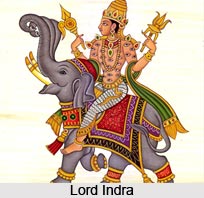 Hymns in Book II of Atharva Veda are thirty six in number. The first hymn is regarding thee supreme power. The second hymn is a chanting to ensure success in gambling. The third hymn eulogizes Water. The fourth hymn is a prayer chanted in order to ensure health and prosperity after wearing an amulet. Next hymn is an invitation as well as praising of Lord Indra. The sixth hymn is an invocation to Lord Agni seeking protection. Next hymn is seeking guard against slanderous accusation and malignity. The eighth hymn is a prayer for guard against Kshatriya. The ninth hymn is a prayer for curing any dangerous disease. Next hymn is on absolution and benediction.
Hymns in Book II of Atharva Veda are thirty six in number. The first hymn is regarding thee supreme power. The second hymn is a chanting to ensure success in gambling. The third hymn eulogizes Water. The fourth hymn is a prayer chanted in order to ensure health and prosperity after wearing an amulet. Next hymn is an invitation as well as praising of Lord Indra. The sixth hymn is an invocation to Lord Agni seeking protection. Next hymn is seeking guard against slanderous accusation and malignity. The eighth hymn is a prayer for guard against Kshatriya. The ninth hymn is a prayer for curing any dangerous disease. Next hymn is on absolution and benediction.
The eleventh hymn is guard against enemies by wearing an amulet. Next is the prayer for retribution against a rival worshipper. The thirteenth hymn is an invocation to all Gods on the coronation of a youth. The succeeding hymn is regarding safety against small creatures. The fifteenth and sixteenth hymns are prayers against fear. The seventeenth prayer is to an amulet for strength and health. The eighteenth hymn is a prayer for safety against goblins, evil creatures and enemies. Next is the hymn to Lord Agni for protection against enemy. Twenty fourth hymn is a prayer for protection against magical spells of harmful people.
Next hymn is a chant against those who cause abortion. Twenty sixth hymn is a benediction of cattle who had left home and have come back now. Next is a prayer for help against an opponent in a debate. The twenty eighth one is a prayer for long life of a boy. The next is regarding a benediction on a man who is sick. Thirtieth hymn is a prayer for man`s love. Next is a prayer for protection against all worms. The thirty second one is protection against all worms for cows. This is continued in the next hymn also. Thirty fourth hymn is a prayer regarding animal sacrifice. Next hymn is compensation for a sacrifice that has not been performed properly. The ultimate hymn is a prayer for a girl so that in order to get a good husband.



















